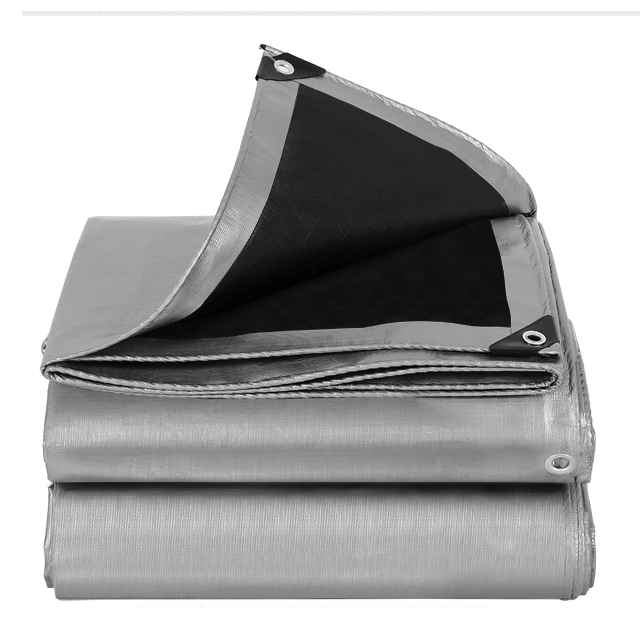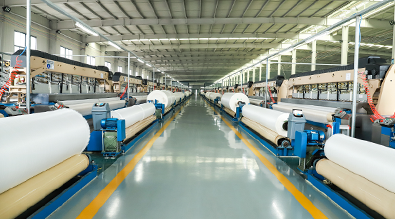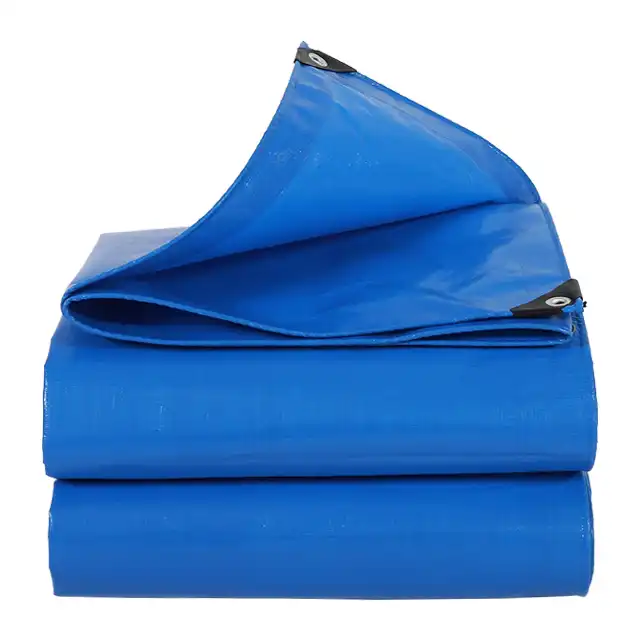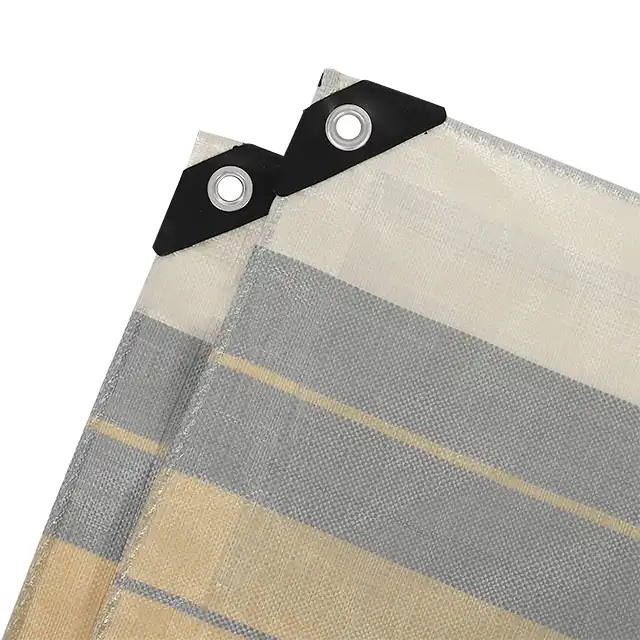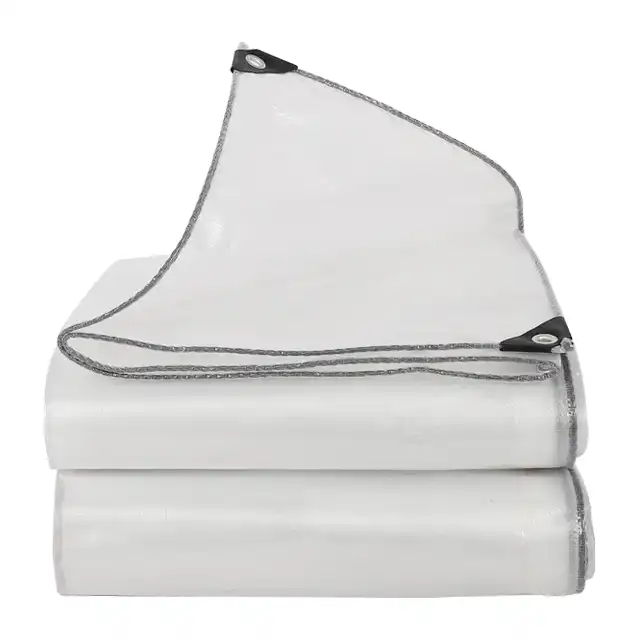Key Considerations When Sourcing Tarpaulins from China
Picture this: your construction project urgently needs high-quality protective covers, but local suppliers quote astronomical prices with extended lead times. Meanwhile, you've heard about China tarpaulin manufacturers offering competitive solutions, yet concerns about quality, reliability, and communication barriers hold you back. This comprehensive guide addresses these exact pain points, providing you with essential insights to successfully navigate the Chinese tarpaulin market. Whether you're a construction manager, logistics coordinator, or procurement specialist, understanding the key considerations when sourcing tarpaulins from China will help you secure reliable, cost-effective solutions while avoiding common pitfalls that could jeopardize your projects and budget.
Quality Standards and Certification Requirements for China Tarpaulin Products
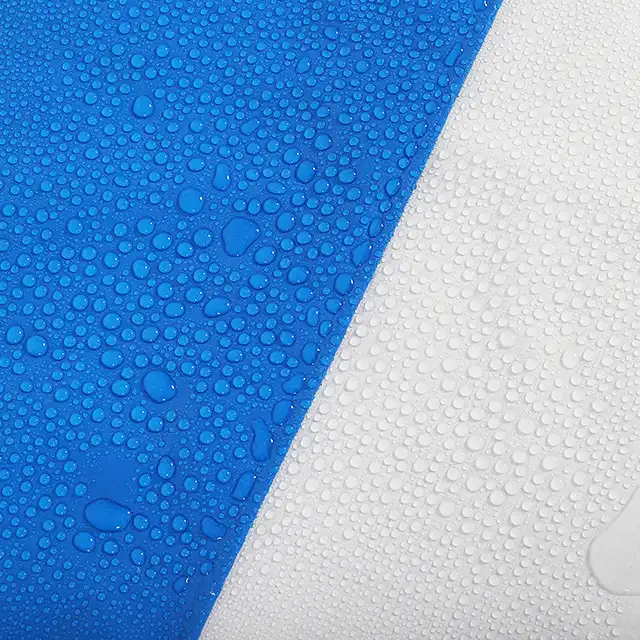
The foundation of successful tarpaulin procurement lies in understanding and verifying quality standards. Leading Chinese manufacturers like Linyi Shengde Plastic Co., Ltd. have implemented rigorous quality management systems that match or exceed international standards. When evaluating China tarpaulin suppliers, prioritize manufacturers holding ISO 9001:2015 certification, which demonstrates their commitment to consistent quality management throughout the production process.
-
Material Specifications and Testing Protocols
Professional China tarpaulin manufacturers utilize high-density polyethylene (HDPE) woven fabric combined with low-density polyethylene (LDPE) coating, creating products with superior durability and weather resistance. The key specifications to verify include mesh count ranging from 10x10 to 14x14, thickness between 7-12 mil, and weight specifications from 100gsm to 250gsm depending on application requirements. Reputable suppliers provide comprehensive testing reports covering tensile strength, tear resistance, UV treatment effectiveness, and waterproof capabilities. Advanced manufacturers employ sophisticated testing equipment to validate product performance across multiple parameters. These tests include accelerated aging studies, temperature resistance evaluations, and chemical compatibility assessments. When sourcing China tarpaulin products, request detailed technical specifications and third-party testing certifications to ensure the materials meet your specific application requirements and environmental conditions.
-
Manufacturing Process Validation
Understanding the manufacturing process helps buyers assess supplier capabilities and product consistency. Top-tier China tarpaulin manufacturers operate integrated production lines incorporating yarn extrusion, fabric weaving, coating application, and finished product processing. Modern facilities feature automated water-jet looms, precision coating machines, and advanced heat-sealing equipment to ensure consistent product quality and dimensional accuracy.
Supplier Verification and Due Diligence for China Tarpaulin Manufacturers
Thorough supplier evaluation forms the cornerstone of successful sourcing relationships. To ensure quality, look for factories with ISO certifications and positive customer reviews. Request samples before placing a large order, and consider visiting the factory if possible. This systematic approach minimizes risks and establishes long-term partnerships with reliable China tarpaulin suppliers.
-
Factory Audit and Production Capacity Assessment
Conducting comprehensive factory audits reveals crucial insights about supplier capabilities and reliability. Evaluate production capacity by examining equipment specifications, workforce size, and monthly output capabilities. Leading China tarpaulin manufacturers typically operate multiple production lines with substantial daily output capacity, often exceeding 100 tons of finished products. This scale ensures consistent supply availability and competitive pricing for large-volume orders. Production capacity assessment should include evaluating equipment age, maintenance schedules, and technology upgrades. Modern facilities incorporate automated systems for material handling, quality control, and packaging, reducing human error and improving consistency. Additionally, assess the supplier's ability to handle peak demand periods and their backup plans for equipment failures or maintenance schedules.
-
Financial Stability and Business Credentials
Verify supplier financial stability through business registration documents, bank references, and credit reports. Established China tarpaulin manufacturers typically maintain substantial registered capital and demonstrate consistent financial performance over multiple years. Companies with partnerships with international organizations like UNHCR, IOM, ICRC, and UNICEF demonstrate their capability to meet stringent quality and delivery requirements for critical applications. Review export licenses, quality certifications, and international compliance documentation to ensure the supplier can legally and effectively serve global markets. Long-established manufacturers with extensive export experience typically maintain better documentation standards and understand international shipping requirements, customs procedures, and quality expectations.
Cost Analysis and Pricing Structure for China Tarpaulin Sourcing
Competitive pricing, high production capacity, and access to a variety of materials are key advantages when working with Chinese factories. However, successful cost management requires understanding all components contributing to total landed costs, not merely the quoted unit prices.
-
Total Cost of Ownership Calculation
Comprehensive cost analysis must include raw material costs, manufacturing expenses, quality control charges, packaging requirements, shipping costs, customs duties, and potential quality-related losses. China tarpaulin prices vary significantly based on material specifications, customization requirements, order quantities, and delivery timelines. Bulk orders typically achieve better unit pricing, but buyers must balance inventory carrying costs against volume discounts. Consider hidden costs such as sample fees, tooling charges for custom specifications, inspection costs, and potential rework expenses. Quality issues discovered after delivery can result in significant additional costs including replacement materials, expedited shipping, project delays, and customer dissatisfaction. Investing in higher-quality suppliers with proven track records often provides better long-term value despite potentially higher initial costs.
-
Payment Terms and Financial Risk Management
Negotiate balanced payment terms that protect both parties while maintaining cash flow requirements. Standard practice involves 30% advance payment with the balance due upon shipment or delivery confirmation. However, experienced buyers often negotiate more favorable terms based on order volume, relationship history, and supplier financial strength. Consider using trade finance instruments such as letters of credit to minimize payment risks while ensuring supplier protection. Escrow services can provide additional security for large orders or new supplier relationships. Establish clear quality acceptance criteria and inspection procedures before finalizing payment terms to avoid disputes over product specifications or performance standards.
Communication and Project Management with China Tarpaulin Suppliers
Effective communication forms the backbone of successful international sourcing relationships. Language barriers, time zone differences, and cultural variations can create challenges that impact project timelines, quality outcomes, and overall satisfaction levels.
-
Technical Specification Communication
Develop detailed technical specifications documents including material requirements, dimensional tolerances, performance standards, packaging instructions, and quality acceptance criteria. Use standardized terminology and include visual aids such as technical drawings, sample photos, and reference standards to minimize misunderstandings. Establish clear communication protocols including preferred contact methods, response time expectations, and escalation procedures for urgent issues. Regular progress updates help identify potential problems early and allow corrective actions before they impact delivery schedules or quality outcomes.
-
Quality Control and Inspection Procedures
Implement systematic quality control procedures including pre-production samples, in-process inspections, and final product evaluations. Many China tarpaulin manufacturers offer comprehensive quality control services, but buyers should establish independent verification procedures to ensure compliance with specifications. Consider hiring third-party inspection services for large orders or critical applications. Professional inspection companies provide objective quality assessments and detailed reports covering material specifications, workmanship quality, packaging adequacy, and quantity verification.
Logistics and Supply Chain Management for China Tarpaulin Imports
International logistics coordination requires careful planning to optimize costs, delivery times, and risk management. China tarpaulin shipments involve various transportation modes, documentation requirements, and regulatory compliance issues.
-
Shipping Methods and Lead Time Planning
Select appropriate shipping methods based on order urgency, volume, and cost considerations. Sea freight offers the most economical solution for large volumes but requires longer lead times typically ranging from 15-35 days depending on destination ports. Air freight provides faster delivery but at significantly higher costs, making it suitable for urgent orders or high-value products. Plan for customs clearance procedures, port handling charges, and inland transportation to final destinations. Consider seasonal factors that might impact shipping schedules such as Chinese New Year holidays, typhoon seasons, or peak shipping periods that could cause delays or increased costs.
-
Risk Management and Insurance Coverage
Implement comprehensive risk management strategies covering product quality, delivery delays, damage during transportation, and supplier performance issues. International trade insurance can provide protection against various risks including product liability, political risks, and currency fluctuations. Establish contingency plans for potential supply disruptions including backup suppliers, alternative transportation routes, and emergency procurement procedures. Diversifying supplier base across multiple China tarpaulin manufacturers can provide additional security against single-source dependencies.
Conclusion
Successfully sourcing tarpaulins from China requires careful attention to quality standards, supplier verification, cost analysis, communication protocols, and logistics management. By focusing on these key considerations and partnering with established manufacturers who demonstrate consistent quality, competitive pricing, and reliable service, buyers can achieve significant cost savings while maintaining product quality and delivery reliability. The Chinese tarpaulin industry offers tremendous opportunities for cost-effective procurement when approached with proper due diligence and professional management practices.
Cooperate with Linyi Shengde Plastic Co., Ltd.
Linyi Shengde Plastic Co., Ltd. stands as the leading enterprise in the Chinese PE tarpaulin field, established in 2003 with registered capital of CNY 80 million. As an expert-grade PE tarpaulin manufacturer, we've built our reputation on unwavering commitment to quality, innovation, and customer satisfaction over more than two decades of operation.
Our comprehensive product portfolio includes PE tarpaulin sheets and rolls, truck covers, impermeable tarps for aquaculture, orchard rain covers, packaging materials, and PE hoses. Through strategic partnerships with international organizations including UNHCR, IOM, ICRC, and UNICEF, we've demonstrated our capability to meet the most demanding quality and performance standards for critical applications worldwide.
Quality management represents our core competitive advantage. We've implemented ISO 9001:2015 certified quality management systems encompassing every aspect of production from raw material procurement through final product delivery. Our advanced testing facilities and comprehensive quality monitoring systems ensure consistent product performance that has earned excellent results in third-party laboratory evaluations and built strong customer loyalty across more than 30 international markets.
Our research and development capabilities set us apart from typical China tarpaulin suppliers. Our high-level R&D team has successfully developed ultra-wide width braiding machines, 4-meter wide tarpaulin products, fire prevention functionalities, and enhanced waterproof technologies. These breakthrough innovations have significantly expanded product applications and performance capabilities, enabling superior solutions for diverse customer requirements.
With state-of-the-art manufacturing facilities covering 60,000 square meters and employing over 1,000 skilled workers across multiple production lines, we maintain daily production capacity exceeding 100 tons of finished tarpaulin products. Our integrated production capabilities include 30+ high-tech extruding machines, 400+ Korea-imported automatic water-jet looms, 4 large fabric coating machines, and 7 finished product processing lines with advanced heat-sealing equipment.
Ready to experience the difference that comes from partnering with a leading China tarpaulin factory, supplier, manufacturer, and wholesale provider? Contact us for high-quality China tarpaulin products at competitive China tarpaulin prices. Save this article for future reference and reach out whenever you need reliable China tarpaulin solutions. Email us at info@shengdetarp.com for your customized quotation today.
FAQ
Q: What certifications should I look for when sourcing tarpaulins from China?
A: Look for ISO 9001:2015 certification, product testing reports from accredited laboratories, and compliance with international standards such as ASTM or EN specifications for material properties and performance.
Q: How can I verify the quality of China tarpaulin products before placing a large order?
A: Request pre-production samples, conduct third-party inspections, review technical specifications and testing reports, and consider visiting the manufacturing facility to assess production capabilities and quality control systems.
Q: What are typical payment terms when sourcing tarpaulins from Chinese manufacturers?
A: Standard payment terms include 30% advance payment with balance due upon shipment. Experienced buyers may negotiate terms based on order volume and relationship history, often using letters of credit for additional security.
Q: How long does it typically take to receive tarpaulin orders from China?
A: Production lead times range from 15-30 days depending on order complexity and volume, plus 15-35 days for sea freight shipping. Air freight can reduce shipping time to 3-7 days but at significantly higher costs.
References
1. "International Trade and Quality Standards in Textile Manufacturing" - Journal of Industrial Engineering, Chen, L. and Zhang, M., 2023
2. "Supply Chain Management in Global Sourcing: Best Practices for Quality Control" - International Business Review, Thompson, R.J., 2024
3. "Manufacturing Excellence in Chinese Textile Industries: A Comprehensive Analysis" - Asian Manufacturing Studies, Wang, H. and Liu, S., 2023
4. "Risk Management in International Procurement: Strategies for Success" - Global Supply Chain Management Quarterly, Anderson, K.P. and Mitchell, D.A., 2024
